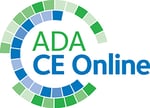Facial fractures in older Americans
Falls are a frequent cause of injury among older Americans and contribute substantially to health care costs for this cohort. The incidence of facial fractures is on the rise in older cohorts, and hospitalization for such injuries may serve as an indication of a shift from a healthy to a compromised medical status. The aims of a retrospective epidemiologic study, published in the April issue of Dental Traumatology, were to provide data from US hospital emergency department (ED) visits for facial fractures and to investigate the outcomes and costs associated with these visits.
Data were obtained from the National Emergency Department Sample (NEDS), a 20% stratified sample of all US hospital ED visits from 2008 through 2014 for visits with an International Classification of Diseases, Ninth Revision, diagnosis code of facial fracture. The inclusion criterion was 65 years and older. Variables examined included age, sex, annual household income quartile, insurance type, hospital region, hospital ownership, and teaching status. Both ED and hospital stay charges were adjusted for inflation to 2014 US dollars. The primary outcome variable was mortality after the ED visit, evaluated by mortality during the ED visit and during hospitalization after the ED visit. The year of the study was the primary independent variable. Simple descriptive statistics summarized the data, and a trend analysis was carried out to determine whether hospital-related mortality was altered during the study. Statistical analysis was performed using SAS 9.4 Version software (SAS Institute) and 2-sided test, and a P value of .05 set as statistically significant.
A total of 540,748 US hospital–based ED visits for facial fractures among patients 65 years and older was recorded during the study. The greatest number of fractures occurred in the cohort aged 75 through 84 years (38.4%), followed by those aged 65 through 74 years (32.7%) and those 85 years and older (28.9%). Facial fractures were most common in women (62.7%). Medicare was the most frequent payer (85.2%), followed by private insurance payers (10.5%); only 1.4% of the ED visits were incurred by patients with no insurance. Hospitals in the South treated 38.4% of patients seen in EDs for facial fractures. Overall, large metropolitan areas accounted for nearly one-half (47.9%) of ED visits. Teaching hospitals treated 43.1% of the patients, while only 15% visited EDs at level 1 trauma center–designated hospitals.
The most frequent type of fractures were closed fractures of nasal bones (61.3%), closed fractures of other facial bones (16.7%), closed blowout fractures of the orbital floor (15%), closed fractures of the malar and maxillary bones (14%), and open fractures of the nasal bones (3.5%). Falls were the predominant cause of fracture (81.8%), followed by motor vehicle accidents (4.5%) and being struck by others (3.9%). A total of 64.1% of patients were seen in the ED and released, while 35.6% were admitted to hospital. The average charge per ED visit was $5,507, and the mean hospitalization charges for inpatients was $61,321 with an average stay of 5.5 days. With regard to mortality, 633 patients (0.1%) died in the ED, while 1.5% died after hospital admission. There were no statistically significant trends in ED mortality rates or death after admission rates during the study.
In this study, falls were the most prevalent cause of facial fracture among older adults in the United States at nearly 82%, with a cost of $12.5 billion, of which 85% was paid for using public (Medicare) dollars. The authors advocate implementation of multifactorial fall prevention strategies, including at least 3 of the following: education, risk assessment and suggestion, exercise, medical care, hazard assessment, and modification. The researchers were encouraged that mortality rates held constant during the study and speculate this may have been due to the institution of multifactorial interventions in some locations. One limitation of the study was the lack of opportunity to perform chart abstraction to examine variables such as causes for hospital admissions and duration of stay, circumstances of falls, ratio of nursing home residents, and association of facial fractures with elder abuse. The authors suggest future studies should examine these variables and include a more detailed analysis of the different types of facial fracture and their outcomes. On a practical note, dental teams should be mindful of potential trip hazards (rheostats, sensor cords) in operatories and place them out of the patient footpath areas to reduce the incidence of falls during dental visits.
Read the original article here or contact the ADA Library & Archives for assistance.
Hallmarks of frailty in older adults
Frailty is a term used to describe older adults considered weaker and more vulnerable than their age-matched cohorts, despite similar conditions, demographics, and sex. Several indexes for the clinical diagnosis of frailty exist, yet their ability to identify progression on the spectrum of robust to prefrail to frail is limited. The aim of this review published online February 19 in Clinical Interventions in Aging was to summarize the evidence on the utility of currently used biomarkers for frailty and compare these with upcoming biomarkers with respect to their strengths, weaknesses, validity, and predictive value.
Currently used circulating biomarkers for frailty include inflammatory mediators, markers of clinical parameters, hormones, products of oxidative degradation, and levels of antioxidants. Unfortunately, these biomarkers are also biomarkers of the aging process itself, only reflect single aspects of the frailty complex, and are poor predictors of condition progression. Increasing numbers of frail people as a result of global aging lend import to the need to find useful biomarkers so early diagnosis and intervention can improve clinical outcomes.
Inflammation is associated with the aging process, and levels of several inflammatory markers, notably interleukin-6, tumor necrosis factor , and C-reactive protein have been shown to correlate with several components of frailty syndrome and are simple to measure. However, their lack of utility in identifying the phase of a patient on the frailty spectrum, inability to predict progression, and general increase in level during the normal aging process render them unsatisfactory as biomarkers for frailty.
As many of the clinical manifestations of frailty mirror the body’s musculoskeletal profile, hormones such as testosterone and its precursor, dehydroepiandrosterone, parathyroid hormone, Vitamin D and insulinlike growth factor 1 have been investigated as possible biomarkers for frailty. Hormonal biomarkers are in widespread use, can assist in diagnosis, and may predict progression along the frailty spectrum. However, they can be challenging biomarkers with variability in levels across seasons and ethnic groups. Further research would be necessary to establish normal reference values for all populations and identify their utility in predicting onset in these patients with complexities and the management of their treatment.
Metabolic dysregulation, with progression to diabetes, has emerged as an increasing public health concern globally. Glycated hemoglobin estimates how much glucose a red blood cell has encountered during its 3-month life span and has been shown to be indicative of frailty. However, it has not yet been shown to predict progression along the frailty spectrum and has not been correlated with poorer clinical outcomes. Several studies have found a correlation between a decrease in circulating hemoglobin, albumin, and low glomerular filtration rate and frailty. However, these biomarkers are also present in comorbidities frequently seen in older adults, rendering their use as stand-alone markers of frailty suspect. Similarly, increased levels of oxidative markers and decreased levels of antioxidants are associated with common comorbidities and with the normal aging process itself. Thus, the flaws in and confounding nature of the currently available biomarkers drives research to finding better tools to diagnose and predict progression of frailty.
Circulating mesenchymal stem cells can aid in repair of damaged tissues, but, depending on their tissue source, demonstrate great variability in differentiation capacity and gene-expression profiles. Circulating osteoprogenitor (COP) cells, which act as surrogates for the marrow stem cell population, freely flow across the endothelial barrier and appear to have the potential to serve as biomarkers for musculoskeletal disorders. In 1 study, lower COP percentage showed strong correlation with clinical indicators of frailty. Lamin A is an intermediate filament present in the nuclear lamina, and patients with deficient lamin A develop musculoskeletal disease. Low lamin A levels in COP cells have been strongly associated with frailty. Longitudinal studies are required to evaluate the sensitivity, specificity, and predictive value of COP percentage and lamin A-COP as biomarkers for frailty. Paralleling the global increase in life expectancy will be a concomitant rise in the incidence of frailty, prompting the need for biomarkers to enable early diagnosis and intervention, allowing older adults to remain healthy and independent longer.
Read the original article here or contact the ADA Library & Archives for assistance.
Advertisement
Utility of sialogogues and salivary substitutes in treating dry mouth
One-fifth of the general population experiences the subjective feeling of dry mouth, which can have significant negative effects on quality of life. The aim of this systematic review, published in the May/June issue of Special Care in Dentistry, was to determine the efficacy of saliva substitutes and stimulants compared to placebo in alleviating symptoms of dry mouth in adult patients, excluding those with a diagnosis of Sjögren’s syndrome.
The authors conducted a systematic review following the Preferred Reporting Items for Systematic Reviews and Meta-analyses (PRISMA) guidelines. Randomized clinical trials (RCT) investigating the utility of saliva stimulants and substitutes for adult patients with dry mouth compared to placebo were evaluated for inclusion. Four electronic databases (PubMed, Web of Science, Cochrane Library, and EMBASE) were searched through March 2018. The risk of bias was assessed using the Cochrane Collaboration’s tool. RCTs comparing saliva stimulants and substitutes to placebo were pooled into a paired meta-analysis. An assessment of statistical heterogeneity was conducted using Cochran’s test for heterogeneity and quantified by the I2 statistic. The statistical analysis was conducted using the software package Comprehensive Meta-analysis version 3 (Biostat, Englewood, NJ).
Three hundred forty-eight references were identified by the search strategy and culled to 88 for full text evaluation. Seven articles were relevant for inclusion, 2 of which used a crossover design, while 5 were double-blind RCTs. All participants suffered from dry mouth at the start of the trial, the etiology of which included dry mouth after radiation therapy, medication-associated dry mouth, or dry mouth of unknown cause. Participants’ age ranged from 33 to 83 years and the number of women exceeded the number of men in 4 of 7 studies. Five studies were determined to have a high risk of bias, while that risk was unclear for 1 study and low for 1 study. Stimulated and unstimulated salivary flow represented the primary outcome measure reported. Secondary outcomes included likelihood of patients’ clinical improvement and self-reported dry mouth questionnaires.
No statistically significant differences in unstimulated salivary flow were found using Biotene Oral Balance gel or toothpaste compared to placebo (fixed-effect model: Difference in means [DM] = .006; 95% CI = -.014 to .026; P = .547). On the other hand, there was an increased unstimulated salivary flow using 1% malic acid topical spray compared to placebo (fixed-effect model: DM = .096; 95% CI = .092-.100; P = .001). Unstimulated salivary flow with OraMoist discs was statistically significant in 1 study compared to placebo (P < .001), but not for olive oil with lycopene (P = .775). There was a statistically significant increase in stimulated salivary flow with 1% malic acid compared to placebo (fixed-effect model: DM = .203; 95% CI = .106 to .300; P < .001). Patients using 1% malic acid topical spray were 5.4x more likely to demonstrate clinical improvement over use of placebo (random-effects model: Risk ratio = 5.405; 95% CI = 2.634-11.091; P .001). The heterogeneity of the dry mouth questionnaires precluded meta-analysis on the secondary outcome of subjective self-perception of dry mouth.
In this systematic review, use of 1% malic acid spray increased stimulated salivary flow by 0.203 mL/min (P < .001) compared to placebo, and an average increase in unstimulated flow of 0.096 mL/min (P < .001) using the same agent compared to placebo. While this suggests that a dry mouth patient could achieve therapeutic improvement when using 1% malic acid spray for 2 weeks, the high risk of bias, small sample size, and paucity of studies weakens the quality of the evidence at hand. Likewise, the 5.4-fold increase in improvement in subjective sensation of dry mouth with 1% malic acid spray compared to placebo is encouraging, but again, due to risk of bias, small sample size and limited number of studies, the authors advise caution when interpreting these results. The researchers recommend the development of a validated, standardized dry mouth questionnaire to serve as the criterion standard for use in future RCT.
The authors discussed shortcomings of previously published systematic reviews with a view of how to improve the quality of the evidence for future studies. In addition to standardizing a dry mouth questionnaire, protocols for collecting stimulated and unstimulated saliva samples need to be standardized. RCTs should be designed to include large sample sizes, use cogent randomization strategies, control for length of study, conduct separate evaluation of the active ingredient versus delivery modality, control for cause of dry mouth and other factors which would enable isolation of meaningful variables with the goal of developing evidence-based therapeutic strategies for patients plagued by dry mouth.
Read the original article here or contact the ADA Library & Archives for assistance.
Personality traits may predict falls in older adults
Falls are a risk factor for loss of independence and a major public health problem in older adults. There is a dearth of information concerning whether risk for falls in older adults can be predicted by a person’s innate patterns of thinking, feeling, and behaving. The aim of a study, published online April 4 in The Journals of Gerontology, Series B, was to examine the association between personality traits and incidence of falls and to examine whether the relationship was moderated by age or sex.
The authors studied data from the Health and Retirement Study, a national longitudinal study of older Americans. Enhanced face-to-face interviews included a leave-behind questionnaire with a personality measure. Health and Retirement Study investigators recorded data on falls only among people 65 years or older. A total of 8,001 people provided complete data on personality, falls, and demographic characteristics at baseline. The exclusion criterion was having had a fall within the 2 years before the personality assessment. Of the remaining 5,193 participants, 4,759 had data on falls at any of the subsequent follow-up assessments, which occurred every 2 years through 2016; these participants formed the study cohort.
Participants responded to queries regarding falls, personality traits (neuroticism, extraversion, openness, agreeableness, conscientiousness), mediators (disease burden, depression, cognitive functioning, physical inactivity, smoking status, handgrip strength), and covariates (age, sex, race, educational level attained). Cox proportional hazards models were used to evaluate whether personality was related to incidence of falls, with analyses adjusted for age, sex, race, and educational level attained. Supplemental analyses were conducted to determine whether the association of each personality trait with falls was independent of the other traits. Mediational analyses were performed for each mediator separately, and then together.
Of the 4,759 participants, 54% were women aged 65 through 99 years at baseline. Across the mean follow-up period of 5.16 years, 2,811 participants (59.1%) experienced a fall. Cox regression analyses demonstrated that 1 standard deviation lower conscientiousness was associated with a 20% greater risk of falling, statistically significant at P < .001. One standard deviation for neuroticism was associated with a 14% greater risk of falls, which also was statistically significant (P < .001). There were no statistically significant associations between extraversion, openness, or agreeableness and incidence of falls.
Indirect effects for each mediator demonstrated that low conscientiousness and high neuroticism showed significant association with falls via increased disease burden, enhanced depressive symptoms, and reduced physical activity. The association between neuroticism and falls was mediated by smoking status and handgrip strength.
This study showed that personality is a significant predictor of falls in older adults, especially with traits of lower conscientiousness and higher neuroticism, independent of sociodemographic covariates. This study also revealed that comorbidities, depressive symptoms, physical inactivity, smoking, and handgrip strength mediated the personality traits-falls association.
Strengths of this study included the large longitudinal dataset, up to 11-year follow-up period, examination of 5 major personality traits, and recognition of potential mediators of falls. On the downside, the observational study design precluded an investigation into cause-and-effect relationships. In addition, the study design did not stratify for different types of falls. The authors purport that these results may provide information to help clinicians develop personality trait-driven interventions to reduce the incidence of falls.
Read the original article here of contact the ADA Library & Archives for assistance.

Advantage Arrest SDF 38%
Advantage Arrest is the first and only American-made silver diamine fluoride (SDF), a must-have for every dental office. Advantage Arrest is the only tinted SDF formula, enhancing placement visualization, and is available in an economical 8 mL bottle and unit-dose packaging for enhanced asepsis. Advantage Arrest is an immediate and effective desensitizer (D9910), a discloser of incipient lesions (D1354), and a proven caries preventive agent (D1208). Elevate Oral Care preventive care consultants have conducted educational staff meetings for thousands of oral health professionals since launching Advantage Arrest in 2015. To purchase Advantage Arrest directly and/or schedule your informative staff meeting today, click here.
Healthy aging CE in San Francisco  ADA FDI World Dental Congress Sept. 4-8 will offer attendees critical education content on some of the most important topics facing the dental profession today. Healthy aging courses to consider are:
ADA FDI World Dental Congress Sept. 4-8 will offer attendees critical education content on some of the most important topics facing the dental profession today. Healthy aging courses to consider are:
- Managing and Preventing Dental Erosion in Children and Adults (#5505), CE Hours: 1
- Management of Root Caries in Older Adults (#6116), CE Hours: 1
Register today at ADA.org/meeting.
ADA CE Online Courses  Need CE? ADA CE Online has hundreds of hours of CE that you can earn from the comfort of your own home. Too many to choose from? Take them all! Get unlimited access to the entire ADA CE online library, including JADA, for one year from purchase. Access anywhere, anytime. With new courses being added every month, you’ll never run out of education opportunities. Group subscriptions are also available, check it out now!
Need CE? ADA CE Online has hundreds of hours of CE that you can earn from the comfort of your own home. Too many to choose from? Take them all! Get unlimited access to the entire ADA CE online library, including JADA, for one year from purchase. Access anywhere, anytime. With new courses being added every month, you’ll never run out of education opportunities. Group subscriptions are also available, check it out now!

The consulting editor for JADA+ Scan — Healthy Aging is Linda C. Niessen, DMD, MPH; Dean and Professor; Nova Southeastern University College of Dental Medicine. |
|







